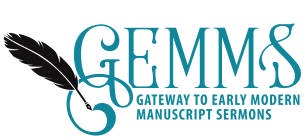Catherine Evans
ODNB (15518)
Born at East Grinstead, the 8th of 9 children of William Kidder and Elsabeth. The family were impoverished lesser gentry. Kidder was taught at a local grammar school by a Dutchman, Reyner Herman, who taught him Latin, Greek and religious principles. He initially couldn't afford to go to university and trained as an apothecary, however friends raised funds for him and entered Emmanuel College on June 1649. He was financially supported in his studies by another fellow, Samuel Cradock, a Presbyterian divine. Despite this, he rejected Presbyterian ordination and sought out Anglican orders, and was ordained as deacon and priest in November 1658. The next year he was appointed to the college living of Stanground. In 1662 he refused to subscribe to the newly amended prayer book and so was deprived of his living. He had married (Elisabeth) and had young children and by 1664 had conformed and was appointed to Rayne, where he reported the congregation were 'factious to the greatest degree'. He described his time there as a 'lost part of my life'. While he was there he published "A Young Man's Duty" (1671), which ran to ten editions by 1750. In the plague his family, including his wife, was affected but survived, although all three of his children would die shortly afterwards. In 1674 he was appointed preacher at the Rolls and given the living of the small, impoverished parish of St Martin Outwich, resigning his post at Rayne despite how the St Martin stipend. His post at the Rolls ended unexpectedly leaving him in poverty, so he acted as a tutor to Sir William Dawes and became part of a circle of clerics including future archbishops Tillotson, Tenison, Wake, and Sharp. In 1680 another three of his children died from smallpox. He became a popular preacher with his sermons being published and also wrote other works. In 1689 he was made a royal chaplain and in 1691 appointed as Bishop of Bath and Wells. However, he was so stricken with gout that he had to be carried into the palace chapel on his first ordination. His episcopate is remembered mainly for ongoing battles with the clergy. His health continued to worsen however he was killed by the Great Storm of 1703. Both he and his wife were killed by a collapsing chimney stack on to the roof of the bishop's palace. They were survived by two daughters.
